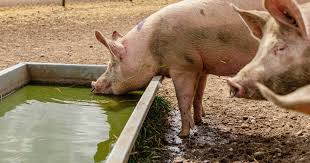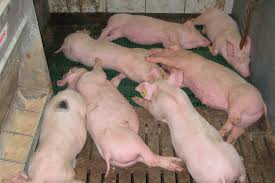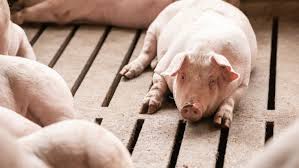Pigs can be handled on the farm with minimal stress if their behavior is well understood. However, improper handling causes considerable stress in the animals and can negatively affect many of their physiological functions.
For example, stress can reduce weight gains, lower immune responses, alter physiological factors such as blood chemistry, and interfere with reproductive processes.
Read Also: How to Process, Package, and Export Papayas (Pawpaw)
Proper Procedures for Handling Pigs

1. Use Lighting to Your Advantage
Pigs are very sensitive to sharp contrasts between light and dark. Lighting should be bright but evenly diffused. Pigs reared in enclosed buildings may balk at full daylight. Use lamps to illuminate areas where the pigs are to move. The lamps should not shine directly into the eyes of approaching animals.
2. Be Aware of Changes in Flooring or Wall Conditions
Changes in flooring types, textures, or wall colors can cause pigs to refuse to move. When transferring from metal or plastic floors to concrete, allow 30 minutes for pigs to become accustomed to the new flooring. Ensure the floor has a non-slip surface.
3. Reduce Excitability in Pigs
Excitability in pigs can be reduced by:
i. Providing toys.
ii. Providing extra contact with people, preferably on a daily basis.
iii. Playing a radio in the building.
The effectiveness of these measures depends on the type of housing, genetics, husbandry, procedures, and other factors.
4. Use Appropriate Sorting and Handling Equipment
The appropriate handling equipment includes lightweight sorting boards or panels, nylon flags, a witch’s or matador’s cape, and shaker paddles. These tools help in sorting and moving pigs with minimal stress.
Read Also: The PawPaw/Papaya Ovary: Economic Importance, Uses, and By-Products
Procedure to Reduce Fighting in Mixed Pigs

- Minimize other stressors.
- Avoid overcrowding.
- Ensure adequate ventilation.
- Do not mix pigs when disease is obvious.
- Mix all pigs at the same time in a new and unfamiliar pen.
- Avoid mixing pigs when the temperature exceeds 90°F.
- Provide areas for pigs to escape during fighting.
Observations of pigs indicate that providing them with toys and positive human contact reduces their excitability. A calm animal can be trained to cooperate during restraint and handling. This makes handling less stressful for both the pigs and their handlers.
Do you have any questions, suggestions, or contributions? If so, please feel free to use the comment box below to share your thoughts. We also encourage you to kindly share this information with others who might benefit from it. Since we can’t reach everyone at once, we truly appreciate your help in spreading the word. Thank you so much for your support and for sharing!
Read Also: Improve Your Soil: Composting Facts to Create Nutrient-Dense Soil

